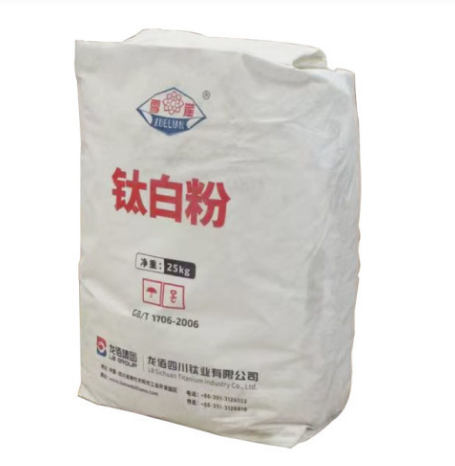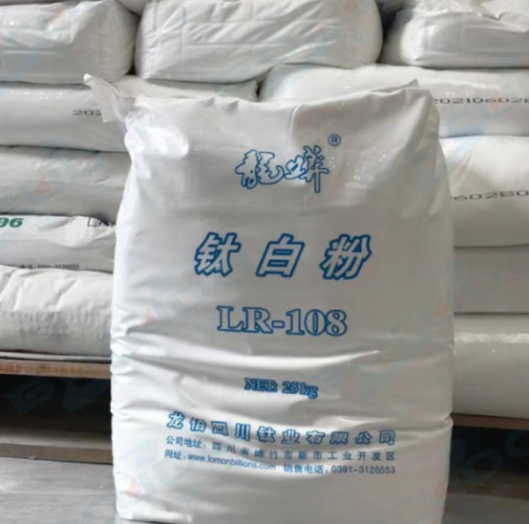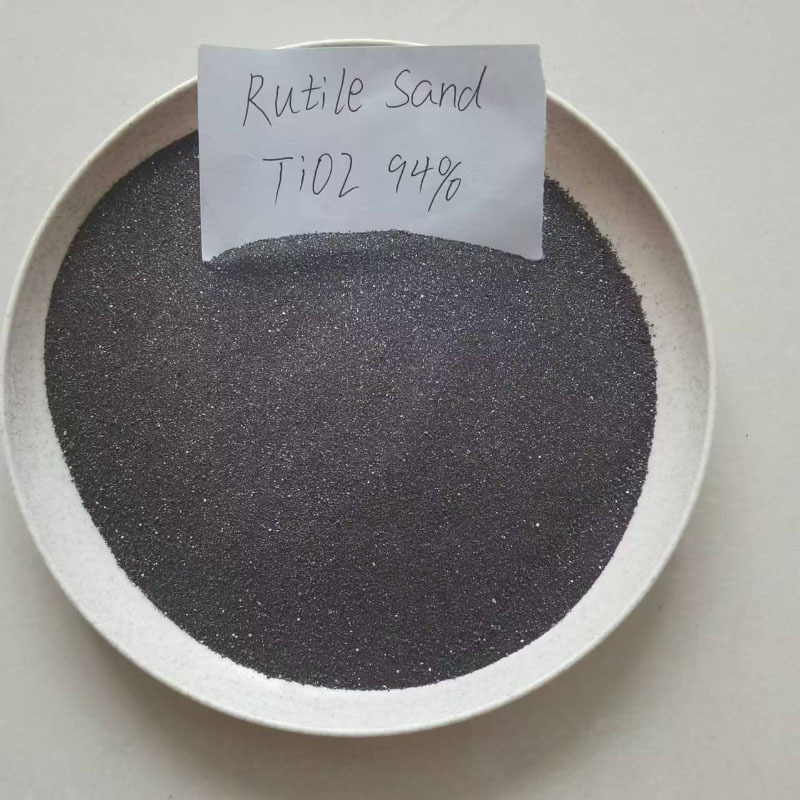The Future of Rutile Sand in Eco-Friendly Chemical Solutions
Release Time:
May 18,2025
The Future of Rutile Sand in Eco-Friendly Chemical Solutions As the world increasingly shifts towards sustainability, the search for eco-friendly materials becomes paramount. Among these materials, **rutile sand** stands out as a versatile option with the potential to revolutionize various industries, particularly the chemical sector. This article delves into the significance of rutile sand, its a
The Future of Rutile Sand in Eco-Friendly Chemical Solutions
As the world increasingly shifts towards sustainability, the search for eco-friendly materials becomes paramount. Among these materials, **rutile sand** stands out as a versatile option with the potential to revolutionize various industries, particularly the chemical sector. This article delves into the significance of rutile sand, its applications, and its promising future in eco-friendly chemical solutions.
Table of Contents
- 1. Introduction to Rutile Sand
- 2. Physical and Chemical Properties of Rutile Sand
- 3. Applications of Rutile Sand in Eco-Friendly Chemicals
- 4. Environmental Benefits of Using Rutile Sand
- 5. Market Trends and Demand for Rutile Sand
- 6. Sustainability Initiatives in Rutile Sand Production
- 7. Case Studies: Successful Use of Rutile Sand in Industry
- 8. Future Outlook for Rutile Sand in Eco-Friendly Solutions
- 9. Frequently Asked Questions
- 10. Conclusion
1. Introduction to Rutile Sand
Rutile sand, primarily composed of titanium dioxide (TiO2), is a naturally occurring mineral that is gaining traction in various applications due to its **eco-friendly characteristics**. This mineral is not only essential for the production of **titanium metal** but also plays a crucial role in the manufacturing of pigments, ceramics, and various chemical solutions. As industries look to minimize their environmental footprints, rutile sand emerges as a sustainable alternative, aligning with the growing demand for green chemistry.
2. Physical and Chemical Properties of Rutile Sand
Understanding the properties of rutile sand is essential to appreciate its applications in eco-friendly chemical solutions. Rutile sand has several characteristics that make it particularly useful:
2.1 Physical Properties
- Color: Rutile is typically reddish-brown, which contributes to its use in pigments.
- Density: It has a high density, making it suitable for various applications requiring strength.
- Particle Size: The particles can be processed into various sizes, enhancing their versatility in different industries.
2.2 Chemical Properties
- Stability: Rutile is thermally stable, resistant to decomposition at high temperatures.
- Inertness: It exhibits excellent inertness in chemical reactions, making it ideal for use in various formulations.
- Non-toxicity: As a non-toxic material, it poses minimal environmental and health risks, aligning perfectly with eco-friendly initiatives.
3. Applications of Rutile Sand in Eco-Friendly Chemicals
The applications of rutile sand in the chemical industry are vast and varied, showcasing its adaptability and potential for environmental sustainability.
3.1 Pigment Production
One of the most common uses of rutile sand is in the production of white pigments. The titanium dioxide derived from rutile is used to create bright, opaque coatings for paints, plastics, and paper, significantly reducing the need for harmful synthetic alternatives.
3.2 Catalyst in Chemical Reactions
Rutile sand plays a role as a catalyst in various chemical processes, facilitating reactions without being consumed. This application is particularly relevant in the production of environmentally friendly chemicals, where traditional catalysts may pose environmental risks.
3.3 Ceramics and Glass Manufacturing
In ceramics and glass manufacturing, rutile sand enhances the strength and durability of products. Its use in these applications not only improves the quality of the final products but also reduces the carbon footprint associated with production.
3.4 Water Treatment Solutions
Rutile sand can also be utilized in water treatment applications, where it helps remove impurities and improve water quality. Its non-toxic nature ensures that it is safe for both the environment and human health, making it a valuable resource in this sector.
4. Environmental Benefits of Using Rutile Sand
The ecological advantages of using rutile sand in chemical solutions cannot be overstated. Some key benefits include:
4.1 Reduction of Toxic Waste
By substituting rutile sand for more harmful materials, industries can significantly reduce the amount of toxic waste generated during production processes. This shift not only lessens the environmental impact but also promotes public health.
4.2 Lower Carbon Footprint
Rutile sand production typically requires less energy than other materials, resulting in a lower **carbon footprint**. This reduction is crucial for industries striving to meet stringent environmental regulations and sustainability goals.
4.3 Conservation of Natural Resources
The increasing use of rutile sand encourages the conservation of more limited resources. By integrating rutile into various applications, industries can lessen their reliance on non-renewable materials.
5. Market Trends and Demand for Rutile Sand
The demand for rutile sand is poised for growth, driven by several market trends:
5.1 Rise of Eco-Friendly Products
As consumers become more environmentally conscious, the demand for **eco-friendly products** is on the rise. Industries are increasingly seeking sustainable materials like rutile sand to meet this demand.
5.2 Innovations in Chemical Manufacturing
Innovative approaches to chemical manufacturing that emphasize green technology are gaining traction. Rutile sand is often at the forefront of these innovations, as companies seek to incorporate sustainable materials into their processes.
5.3 Regulatory Pressure
With governments worldwide implementing stricter regulations on environmental practices, industries are compelled to adopt greener alternatives. Rutile sand, with its sustainable properties, is an attractive option for compliance.
6. Sustainability Initiatives in Rutile Sand Production
As the world embraces sustainable practices, the production of rutile sand is also evolving. Many companies are implementing initiatives to ensure environmentally responsible extraction and processing methods.
6.1 Responsible Mining Practices
Companies are adopting responsible mining practices that minimize environmental disruption and promote the rehabilitation of mining sites. This commitment to sustainable mining helps ensure that rutile sand can be harvested without compromising ecological integrity.
6.2 Recycling and Reuse
There is a growing movement towards recycling and reusing rutile sand in various applications. By incorporating recycled materials, industries can further enhance the sustainability of their products while reducing waste.
7. Case Studies: Successful Use of Rutile Sand in Industry
Several companies have successfully integrated rutile sand into their processes, showcasing its effectiveness and sustainability:
7.1 Case Study 1: Eco-Friendly Paint Manufacturer
A leading paint manufacturer transitioned to rutile sand-based pigments for their eco-friendly product line. This shift not only improved the environmental profile of their paints but also attracted a new customer base interested in sustainable options.
7.2 Case Study 2: Green Water Treatment Facility
A water treatment facility implemented rutile sand as part of their filtration system, significantly improving water quality while reducing reliance on chemical additives. This initiative resulted in enhanced public health outcomes and environmental benefits.
8. Future Outlook for Rutile Sand in Eco-Friendly Solutions
The future of rutile sand in eco-friendly chemical solutions appears bright. As industries increasingly prioritize sustainability, the demand for rutile sand is expected to rise. Its unique properties and versatility make it an invaluable resource for creating environmentally responsible products and processes.
9. Frequently Asked Questions
9.1 What is rutile sand used for?
Rutile sand is primarily used in pigment production, ceramics, glass manufacturing, and as a catalyst in various chemical processes.
9.2 Is rutile sand environmentally friendly?
Yes, rutile sand is considered environmentally friendly due to its non-toxic nature, lower carbon footprint, and ability to reduce toxic waste in production processes.
9.3 How is rutile sand extracted?
Rutile sand is extracted through mining operations that prioritize responsible practices to minimize environmental disruption and promote site rehabilitation.
9.4 What are the benefits of using rutile sand over synthetic alternatives?
Using rutile sand over synthetic alternatives can lead to reduced toxicity, lower environmental impact, and compliance with regulatory standards.
9.5 What trends are influencing the market for rutile sand?
Key trends include the rise of eco-friendly products, innovations in green chemical manufacturing, and increased regulatory pressure for sustainable practices.
10. Conclusion
Rutile sand represents a significant advancement in the pursuit of eco-friendly chemical solutions. Its unique properties, combined with the growing demand for sustainable materials, position it as a valuable resource for multiple industries. By adopting rutile sand, companies can not only improve their environmental impact but also meet the expectations of increasingly eco-conscious consumers. As we move towards a more sustainable future, rutile sand is set to play a pivotal role in shaping the landscape of the chemical industry.
Keywords:
You Can Also Learn More About Industry Trends






